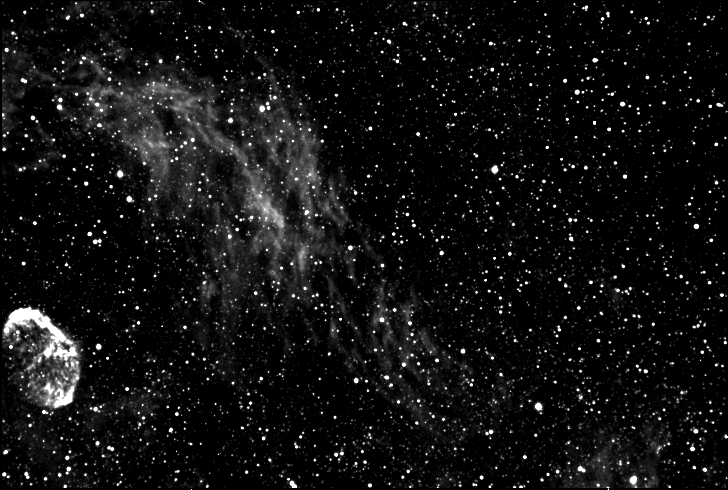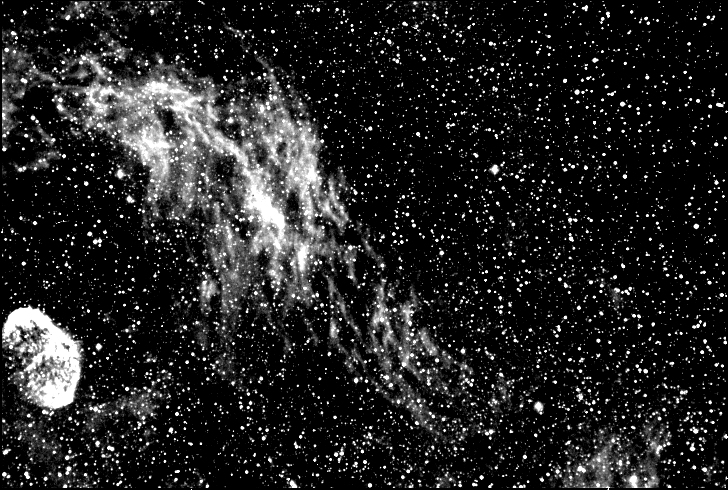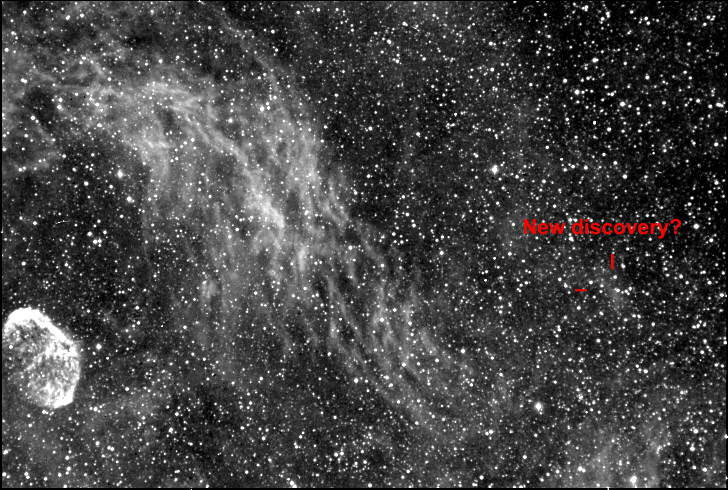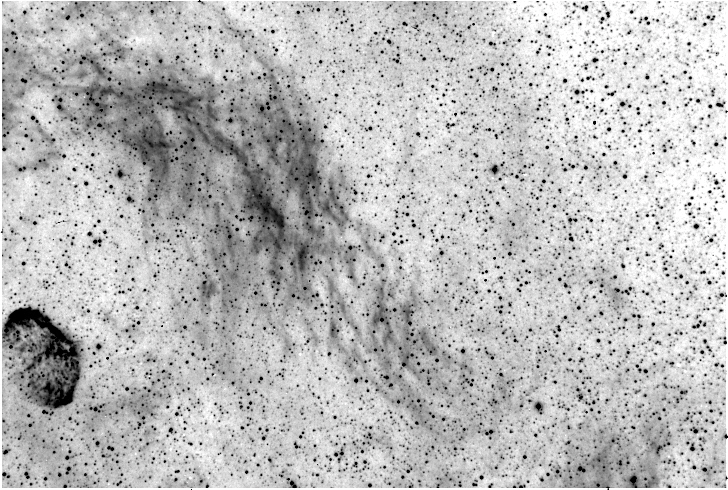
Return to the web site front page
Page 1 - Page 2 - Page 3 - Page 4 - Page 5 - Page 6 - Page 7 - Page 8 - Page 9
Emission nebulae are given this name because unlike reflection nebulae they are emitting their own light. This is due to the atoms of gas absorbing energy from nearby stars and then re-emitting the energy at a very specific wavelengths. In most cases the dominant emission line is hydrogen-alpha, or H-alpha that is found in the red part of the spectrum.
Image centered on GSC 3150:1549 at RA 20 08 03.052 and DEC +38 48 10.88 in the constellation of Cygnus.
Image details - 5 x 300 seconds in hydrogen alpha, binned 3 x 3.
Field of view 83 by 123 arc minutes
Five images combined - no further processing

After digital development in MaxIm

After image stretching

Lynds Bright Nebula #208 is just to the left of center. It is certainly larger and more complex than the catalogue suggests. There is also a slightly brighter patch of nebulosity, brightest around GSC 3150-3467 (20h 04m 15.242s and +38° 50' 16.04") that does not appear in SIMBAD - that some amateurs claimed to be a new discovery when they first imaged it in 2007.
After black/white reversal

Martin Nicholson - Shropshire, United Kingdom.
This page was last updated on January 23rd 2011.